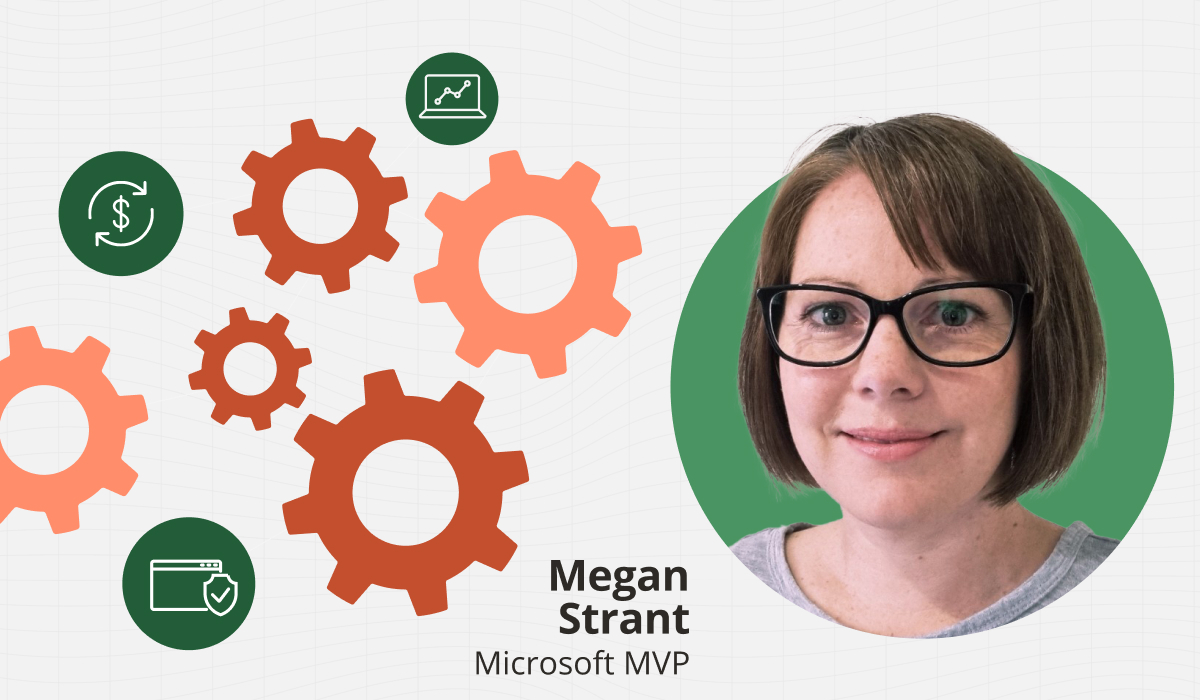
For more than 15 years, Microsoft MVP Megan Strant has been enhancing the end-user experience across organisations. She's worked across a number of Microsoft partners, building and managing their change management practices and learning strategies.
The experience of your people on their journey, and at times, relying on their uptake of technology or shift in behavior, is a major part of the success of any change across your organisation. To drive that success and to improve your people's experience along their journey, you need to make it personal by answering their, "What's in It for Me (WIIFM)?"
In my session, Evolving Relationships With Change Management Methods, at Excelerate =SUM(it) 2022, when we polled the audience on which change management challenge they expected to be the most difficult, the top answer at 48% was "identifying each team's WIIFM."
WIIFM is different across the business--for business owners, for managers and for individual contributors. Each stakeholder level will have a different experience along your change program. But overall, to drive change, you need buy-in from every person from every level.
You're asking more from your people, for them to perform extra work and in ways that often add stress. It's crucial for you (the change agent) to connect with your people. By answering each team's WIIFM, you can build the connection between:
In this blog post, discover how to overcome change management challenges and learn the three key elements in answering each team's WIIFM:
Start with the "why." As world-renowned author Simon Sinek has been saying for years--the "why" is crucial in business. While his work focuses on a business's purpose and inspiring people, the "why" in change management also flows through everything in work. Think: What's the point?
Like how your business's vision, strategic objectives and goals should flow through each department and connect to each employee's role, your change program should too. Whether you're going through a major transformation, driving culture change or implementing new software, you need to build a connection between your people and your change program. Think about your program as part of a greater purpose--not just an initiative. This will help you devise the language for communicating (I'll get to this soon) the work ahead and its benefits.
Involve your people in your planning. Discuss the upcoming changes. If you're running a change program, major activities--such as impact reviews and strategy assessments--should already be underway. In other words, talk to your people and pay attention to their pain points, blockers and de-motivators. Your goal isn't to please your people. Try to find a middle ground rather than forcing change.
They won't care or invest their time and energy if they don't see the benefit for themselves and the business. Think: What are they hoping to get out of this change? Your people will tell you. Listen to their perspectives and understand their needs. Ask each stakeholder what they want from the situation.
In my session, we also polled the audience on pain points they experience when going through change management. Their top answer at 37% was "motivating team members." While motivation drives success and you need your people on board and motivated to achieve positive results, it can be tricky. Whether you're leading a specific project or have broader organisational goals, appeal to what drives them and keep it simple and achievable.
Some possible motivators include:
Every stakeholder has different perspectives, needs, values and motivators. Ask each stakeholder what they want from the situation.
Craft your communication carefully. It's not merely a task you tick off or updates you send. Communication is your opportunity to connect. It can require persuasion or even creativity to express the core reasons and benefits in a way that aligns with your stakeholders' values and motivators.
Communication that isn't carefully and thoughtfully crafted is stating only the facts, such as an implementation date, IT update or program update. Your people will ignore or delete these.
Some possible methods of communication include:
Put effort into what you communicate and ensure the communication is relatable. To be a strong, successful communicator who drives employees to embrace change, you need to be clear and convincing. Like values and motivators, your stakeholders have different preferred methods of communication. Think about your employees' needs, rather than what you need from them. You're not only informing them--you're persuading them too. Persuasion is easier if you can determine their preferred methods of communication.
Whether you're implementing the next change program across your business or helping your people through the ongoing state of constant change in our world, you need to identify your core reasons, understand their values and motivators and determine their preferred methods of communication. Answer the WIIFM questions to make it personal--and build stronger connections with your people.
Megan Strant is a Microsoft MVP with 15+ years of experience, combining her psychology background with Microsoft technology. She specializes in helping organizations with their Microsoft 365 journey, focusing on the impact and experience of people and the value technology can bring to the business. As a Technical Project Manager and Expert in Change Management at Vena, Megan works with product development teams to assess user needs, design solutions, drive usage and monitor user experience. She is currently leading the Change & Adoption Practice at three Microsoft Partners. Megan's goal is to reduce stress and complexity in the workplace while driving innovation and learning.
